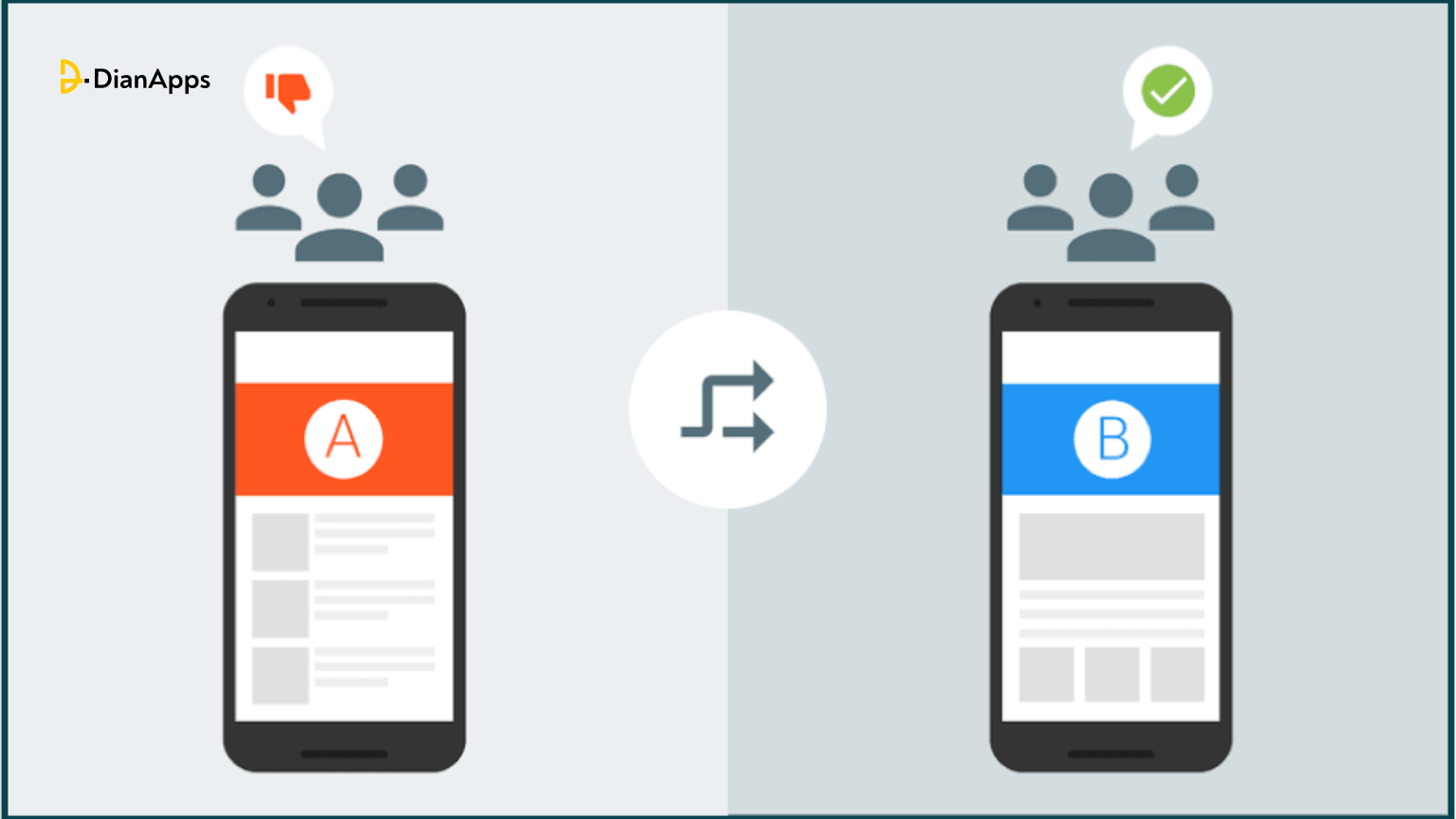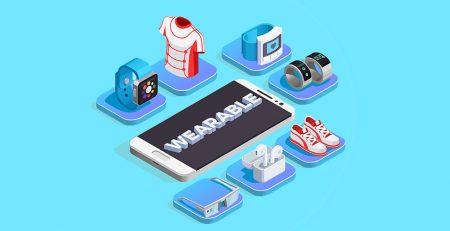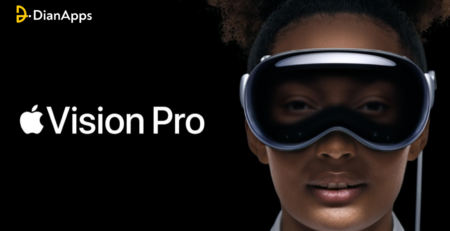Getting Started With Mobile App A/B Testing: Ideas to Consider
Experiments are part of life, and this blog shares a similar mindset by prioritizing Mobile app testing as the end goal.
What do you mean by A/B testing? Let’s give you a practical example!

Do you know how Netflix uses the A/B testing tool? Well, first it uses interleaving A/B designs. In this technique, Netflix alternates each user’s experience between ‘A’ and ‘B’: The user receives the control experience on day one and the treatment on day two, or vice versa.
In a nutshell, A/B testing is a controlled experiment in which you can run two different product or website versions simultaneously and see which one fits or performs better.
What can A/B test in your mobile app development?
- In-app experiences: Messaging, Layout, UI copy
- User flow: Onboarding flow, Subscription flow, Checkout flow
- Push notifications
- Features & functionalities
That’s a smart way to grow in business, isn’t it?
Time to investigate what Mobile app A/B testing refers to!
What is Mobile App A/B Testing?
Mobile app A/B testing is a practice of testing multiple versions of a defined variable, such as creative or copy. A tool that presents different user segments of an in-app experience to determine which one induces the desired action for them or has a tremendous impact on the key metrics of mobile app development.
It’s possible to methodically optimize your mobile app for your targeted KPIs and uncover countless growth prospects for your company that have always been there, waiting to be discovered. This starts with determining what works and what doesn’t for your app.

The deployment of A/B testing for mobile apps occurs on the server side rather than the client side, which sets them apart from typical A/B testing conducted on the web.
Server-side testing enables tests to be conducted and changes to be changed directly on the app server and then deliberately sent to the users’ device, in contrast to client-side testing, which entails sending variants that rely on the users’ browser (client). Both cater to different corporate demands and have varying scopes.
So far, we have understood the definition of A/B testing and Mobile app A/B testing, let us now proceed further with the uses of mobile app A/B testing.
Why Should You Use Mobile App A/B Testing?
For mobile app developers or product managers, mobile app A/B testing is an important practice to determine the app’s scalability and performance. DianApps, a leading mobile app development company addresses 10 uses of mobile A/B testing:
1. Optimizing User Experience
By comparing many iterations of your mobile app, A/B testing enables you to determine which layout, function, or UI piece offers the greatest user experience. Making decisions based on data can help you improve your app’s overall usefulness.

2. Increasing User Engagement:
Understanding user behavior and preferences is made easier with A/B testing. Businesses can improve user engagement metrics, such as click-through rates, time spent in the app, and other important indicators, by experimenting with alternative features or content.
3. Increasing Conversion Rates:
With A/B testing, top app developers test several versions of your app to see which features work best for reaching your conversion objectives, whether they in-app purchases, sign-ups, or other conversions.
4. Lowering Churn Rate:
A/B testing can assist in determining the elements that lead to user attrition. Users are less likely to exit your app if you experiment with alternate onboarding procedures, feature locations, or notification systems.
5. Improving Monetization Strategies:
A/B testing can also optimize the positioning and layout of advertisements, pricing schemes, and other monetization components in your app to maximize income if it depends on in-app purchases or advertising.
6. Iterative Development:
An iterative approach to development is supported by A/B testing. The Android app development company continually tests and improves various areas of your app, ensuring that changes are founded on actual user feedback and statistics, as opposed to depending solely on conjecture or gut instinct.
7. Customization:
Apply tailored experiences for various user groups by using A/B testing. This might entail displaying various features, materials, or promotions following the demographics, tastes, or actions of the user.

8. Lowering Risk in Feature Rollouts:
You may use A/B testing to measure user response and evaluate the effect on important metrics prior to launching a new feature or making a big change. This lessens the possibility of unfavorable customer reviews or widespread discontent.

9. Data-Driven Decision-Making:
The efficacy of various app pieces, user behavior, and preferences are all objectively measured through A/B testing. Using statistics to guide judgments is a more dependable method than depending only on hearsay or gut feeling.
Let’s start exploring some benefits of mobile app ideas where you can experiment with A/B testing.
Mobile App A/B Testing Ideas To Consider
We have categorized this experiment into 4 sections. So read these ideas carefully and consider the one that suits your business.
#1. In-app Experiences
Messaging
In-app messaging is without a doubt one of the most important features of a mobile app that has the power to improve or break the user experience. You may test your in-app prompts or pop-ups in a plethora of ways to make sure the proper message is delivered at the right moment and convinces the user to do what you want.

Image source: https://www.reddit.com/r/pokemongo/comments/5jzrv6/screenshot_christmas_event_notification/
A gaming app may, for instance, experiment with rewards pop-ups upon completing particular milestones to determine the best time to include them to maximize engagement metrics. In a similar vein, an app for publication might assess the best wording for a subscription prompt that encourages users to sign up for further subscriptions.
Have you heard about the Palword– The most top-rated action-adventure game across the globe?
Layout
Because the layout of your app is the first thing a user sees, you want it to be as captivating as possible. Although there are many components and processes involved in creating the ideal app layout, you undoubtedly want it to be easily recognizable, visually appealing, and highly functional—a layout that ensures a seamless and easy-to-use experience for users.
Your team of contemporary designers must know all the authentic design tools to plan a better and ever application layout.

https://dribbble.com/shots/6522219-Recipe-App-Design
Thoroughly testing your app’s layout can be quite beneficial since it will teach you what your customers like when it comes to interactions, how to best organize the app so they can easily find what they’re looking for, and how to create an engaging experience that will win them over as devoted users.
UI copy

Your app content, whether it be in the form of headlines, product descriptions, captions, or CTA button language, is crucial to the user experience as a whole. Writing compelling copy may captivate readers, while poor copy can hurt your main performance indicators by delivering the wrong message in the wrong way or with the wrong amount of words. You must continually test your app text to discover the perfect balance that connects and engages your audience and motivates them to keep using it.
#2. User flow
The series of steps a typical user is likely to take to do the intended job on your app is referred to as user flow. An eCommerce development solutions checkout process, for example, maybe like this:
Optimizing a mobile application’s flow is crucial to lowering drop-off rates, whether the user is making a playlist on a music streaming service or applying for a loan via a mobile banking app. You can determine how to lower friction points so that users may easily complete the intended tasks and move through the app by experimenting with your user flow.
Onboarding flow
The onboarding procedure is a user’s initial interaction with a mobile app. Making the onboarding process as enjoyable as possible is essential to ensuring the user stays around to explore what’s in store. There may be more than one phase in the procedure, such as the registration, the app tutorial, and the app permissions.
The number of sign-up options to offer, whether to allow guest login or not, when to ask for app permissions, whether the tutorial needs to be mandatory, etc. are all things you can test to find the exact number, arrangement, and sequence of steps that offer a seamless onboarding experience and, in the end, result in the highest onboarding completion rate.
Subscription flow
If your app is reliant on a subscription, designing the subscription flow with attention will increase your income. Your users will be able to choose their preferred plan fast and pay without difficulty if the flow is easy to use.

You can test different combinations of plans and their prices, the timing of the subscription pop-up, the number of steps in the subscription flow, the billing page layout, and other factors with mobile app A/B testing to make sure the subscription process is as natural as possible and influences users’ decisions to buy.
Checkout Flow
Did you know that the greatest cart abandonment rate of any channel is 85.65% on mobile devices? You must constantly improve the app checkout procedures to eliminate any potential friction points throughout the whole flow if you want to make sure that your users don’t leave their carts empty throughout the checkout process.

To do so, you will need to test often to determine the best location and prominence of coupons on the page, if you need to require registration, whether you should go with a single-page checkout or a multi-step one, etc.
#3. Push Notifications
The majority of marketers firmly believe in the power of push notifications to re-engage inactive users. However, as several variables affect the success or failure of your push notification campaigns, obtaining the appropriate engagement through this channel can be challenging.

The copy, timing, and frequency of your push notifications are a few of the essential ones. Test your push notifications to see when they work best for a response, how many to send each day to promote engagement without bothering users, what kind of text works best to increase click-through rate, and more.
You might even go one step further and see whether adding photos or emojis to push notifications or customizing the text has any effect on your core metrics.
For instance, a meal delivery service may divide up its idle user base into three groups at random and send each group three distinct push alerts to test which one increases the click-through rate (CTR).
#4. Features & Functionalities
Mobile app A/B testing not only lets you evaluate UI-based changes but also goes deep into your stack to gauge how well certain functionalities perform in real-world use.
This can assist you in rolling out features gradually, segmenting your customer base, validating your product development concepts, and avoiding launching bug-ridden products globally.

Additionally, you may test high-impact features like paywall access, payment gateways, search and product recommendation algorithms, architectural modifications, and many other crucial server-side tests for your mobile app.
Therefore, A/B testing for mobile applications helps product managers, UI/UX design services, and app developers create fiercely competitive apps that offer pleasant user experiences, in addition to helping marketers optimize their user funnel for conversions.
An app focused on personal care and beauty, for instance, would investigate the potential benefits of providing in-app or in-store purchasing selections for its users by allowing them to scan barcodes for product information and watch how-to videos.
How Does Mobile App A/B Testing Work?

- Develop different versions of a feature or design element in your mobile app development services.
- Randomly assign users to different versions to ensure unbiased testing.
- Track user interactions and behavior with each variant in real-time.
- Use statistical methods to compare performance metrics between variants.
- Determine which variant performs better based on predefined success metrics.
- Deploy the winning variant to the entire user base for seamless engagement and conversion.
How To Choose The Right Mobile App A/B Testing Tools?
The best A/B testing tools for your mobile app will depend on what you want to test and measure. Some questions to ask yourself when considering your options are:
- How soon do you want to start?
- How much bandwidth does your engineering team currently have?
- How long is your project going to take?
- Do you want to handle this internally or through a qualified outside vendor?
- Does your team have the know-how to run complex tests?
- How much experience does your team have with statistical analysis?
- What kind of support do you want to have while working on A/B tests?
- What important features are you looking for/what do you want to test?
Making the right choice in A/B testing tools for mobile apps will put you in the best position for success. You will be able to obtain UX audit reports from them, which will outline your current situation both before and after you begin testing.
Through our five-step testing methodology, we take great satisfaction in choosing the appropriate mobile A/B testing solutions. To suit the demands of each client we deal with:
Requirements development
After analyzing your company and the market, we identify the most important demands, establish targets, and adjust quality measures.
QA approach
We create project metrics and a communication plan, define the test and document formats needed for the project. While offer proof of concept.
Launching the examination procedure
As the project team, we choose the necessary tools and prepare the testing environment.
Execution
We follow the schedule that has been developed when conducting testing.
gathering and reporting data.
Wrapping Up
In the always-on, mobile-first world of today, when users have shorter attention spans than ever. Providing a unique and outstanding in-app experience is just as important as creating the app itself.
You must allow data and insights to inform your product. And marketing decisions if you want to build an app that delights users. And cuts through the noise and clutter.
Including A/B testing in your mobile app strategy allows you to continuously improve the app experience and, as a result, increase your app’s fundamental KPIs, such as user engagement, retention, and profitability.
These insights are supported by statistics. You may boost conversions at every user touchpoint. In the end, simplify the whole user journey by optimizing every aspect, flow, and feature of your app using the test findings.
To ensure that your optimization efforts are compounded over time and that you can consistently offer delightful end-to-end app experiences. While improving your overall app performance, test often and constantly build on top of your learnings.
Create a mobile app optimization strategy with this advice on A/B testing for mobile apps.
So go ahead and start using mobile app A/B testing to develop an interesting app with DianApps, a software development company, that creates enjoyable user experiences!




